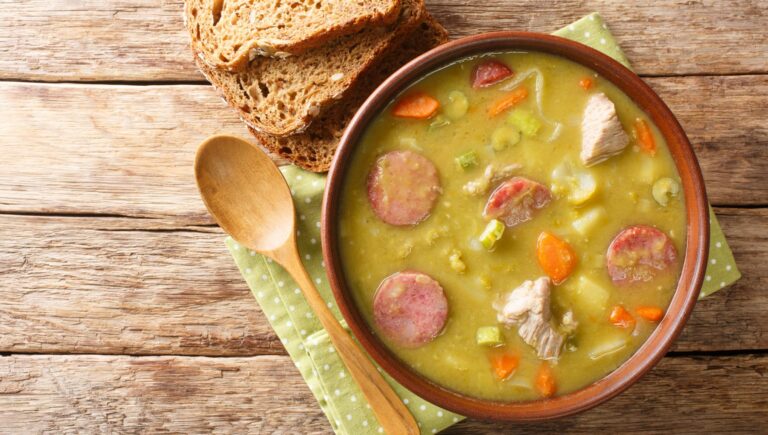Introduction: Dutch cuisine and its influences
Dutch cuisine, also known as Nederlands keuken, is a reflection of the country’s geography and history. As a nation with a long history of trade and colonization, the Dutch have been influenced by a variety of cultures and cuisines. The cuisine is known for its simplicity, quality, and freshness. Although Dutch cuisine has its own unique identity, it has been influenced by French and German cuisine over the years.
French cuisine: a significant impact on Dutch food
French cuisine has had a significant impact on Dutch food. During the 17th and 18th centuries, the upper class in the Netherlands embraced French cuisine, which was considered the epitome of elegance and sophistication. French chefs were employed in Dutch households, and French culinary techniques and ingredients were incorporated into Dutch cuisine. Classic French dishes such as escargots, boeuf bourguignon, and coq au vin were introduced to Dutch cuisine. Additionally, French wine and cheese became staples in Dutch households.
German cuisine: another major influence on Dutch dishes
German cuisine has also played a major role in shaping Dutch cuisine. The Dutch and German cuisines share many similarities due to their geographical proximity. The Germans introduced many dishes to the Dutch, including sausages, stews, and bread. Dutch cuisine also adopted the German tradition of eating “Kaffee und Kuchen” (coffee and cake) in the afternoon. Dutch cuisine also took inspiration from Germany’s beer culture, with many Dutch breweries producing German-style lagers.
How French and German influences changed Dutch cuisine
The French and German influences have transformed Dutch cuisine into a more sophisticated and diverse cuisine. The French emphasis on quality ingredients and techniques, as well as their love of sauces, has influenced Dutch cuisine to focus on using fresh, high-quality ingredients and developing flavorful sauces. The German influence, on the other hand, has resulted in the addition of hearty, filling dishes to Dutch cuisine. Additionally, the Dutch have incorporated German-style bread and pastries into their cuisine.
Popular Dutch dishes with French and German roots
Many popular Dutch dishes have French and German roots. Stamppot, a Dutch staple, is a potato and vegetable mash that can be traced back to German cuisine. Similarly, hutspot, another Dutch dish, is a stew of meat and vegetables that is thought to have been influenced by French cuisine. Another popular Dutch dish with French roots is bitterballen, small deep-fried meatballs that resemble French croquettes.
Conclusion: the ongoing influence of French and German cuisine on Dutch food
French and German cuisine have had a significant impact on Dutch cuisine, shaping it into the diverse, flavorful cuisine it is today. The Dutch continue to embrace these culinary traditions, with French and German dishes continuing to be popular in Dutch restaurants and households. While Dutch cuisine has its own identity, it owes a lot to its French and German influences.

